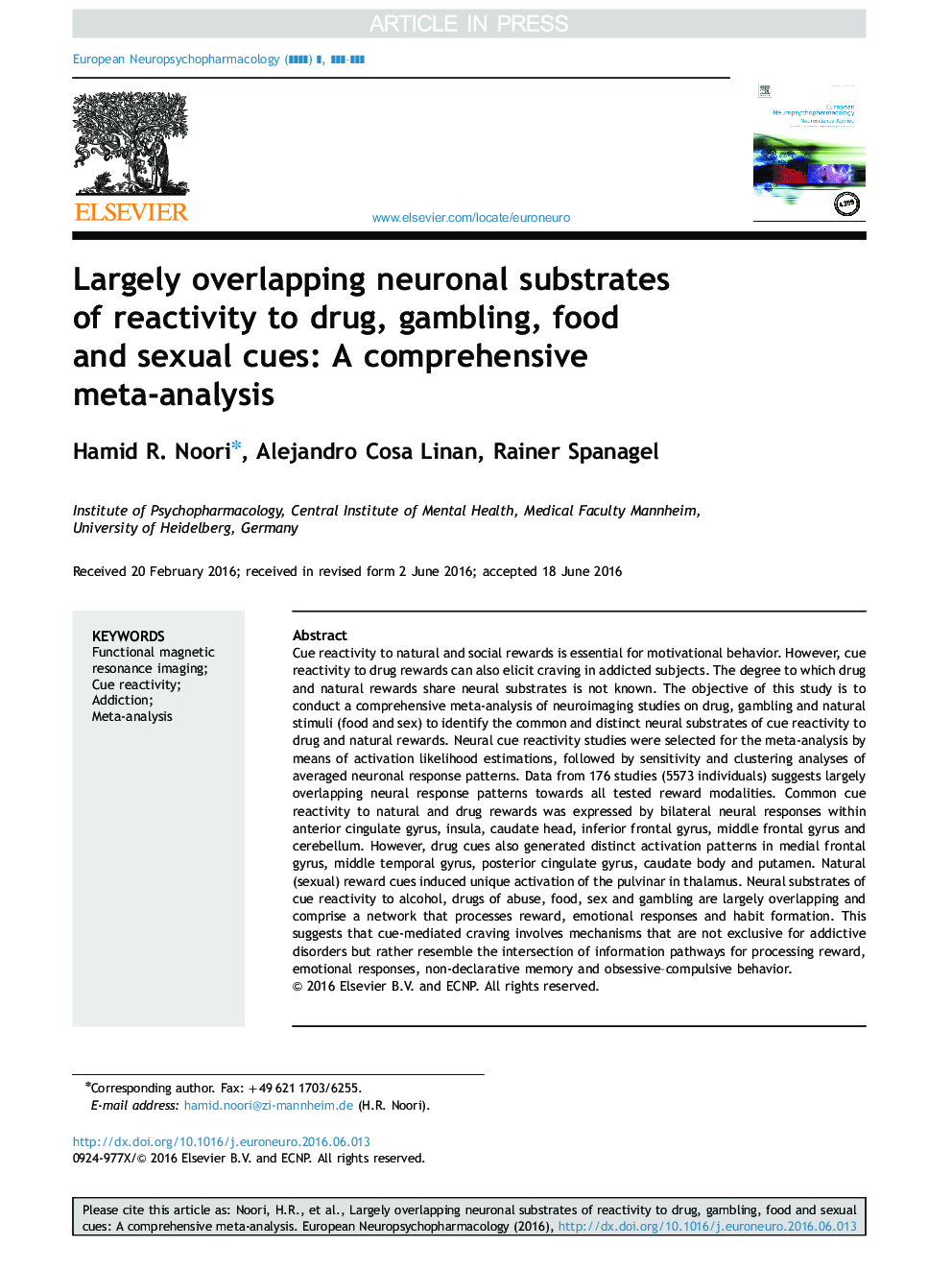| کد مقاله | کد نشریه | سال انتشار | مقاله انگلیسی | نسخه تمام متن |
|---|---|---|---|---|
| 4930853 | 1363350 | 2016 | 12 صفحه PDF | دانلود رایگان |
عنوان انگلیسی مقاله ISI
Largely overlapping neuronal substrates of reactivity to drug, gambling, food and sexual cues: A comprehensive meta-analysis
ترجمه فارسی عنوان
به طور عمده همپوشانی زیربناهای عصبی از واکنش به مواد مخدر، قمار، مواد غذایی و نشانه های جنسی: یک متا آنالیز جامع
دانلود مقاله + سفارش ترجمه
دانلود مقاله ISI انگلیسی
رایگان برای ایرانیان
کلمات کلیدی
تصویربرداری رزونانس مغناطیسی عملکردی، واکنش پذیری کی اعتیاد، متاآنالیز،
موضوعات مرتبط
علوم زیستی و بیوفناوری
علم عصب شناسی
روانپزشکی بیولوژیکی
چکیده انگلیسی
Cue reactivity to natural and social rewards is essential for motivational behavior. However, cue reactivity to drug rewards can also elicit craving in addicted subjects. The degree to which drug and natural rewards share neural substrates is not known. The objective of this study is to conduct a comprehensive meta-analysis of neuroimaging studies on drug, gambling and natural stimuli (food and sex) to identify the common and distinct neural substrates of cue reactivity to drug and natural rewards. Neural cue reactivity studies were selected for the meta-analysis by means of activation likelihood estimations, followed by sensitivity and clustering analyses of averaged neuronal response patterns. Data from 176 studies (5573 individuals) suggests largely overlapping neural response patterns towards all tested reward modalities. Common cue reactivity to natural and drug rewards was expressed by bilateral neural responses within anterior cingulate gyrus, insula, caudate head, inferior frontal gyrus, middle frontal gyrus and cerebellum. However, drug cues also generated distinct activation patterns in medial frontal gyrus, middle temporal gyrus, posterior cingulate gyrus, caudate body and putamen. Natural (sexual) reward cues induced unique activation of the pulvinar in thalamus. Neural substrates of cue reactivity to alcohol, drugs of abuse, food, sex and gambling are largely overlapping and comprise a network that processes reward, emotional responses and habit formation. This suggests that cue-mediated craving involves mechanisms that are not exclusive for addictive disorders but rather resemble the intersection of information pathways for processing reward, emotional responses, non-declarative memory and obsessive-compulsive behavior.
ناشر
Database: Elsevier - ScienceDirect (ساینس دایرکت)
Journal: European Neuropsychopharmacology - Volume 26, Issue 9, September 2016, Pages 1419-1430
Journal: European Neuropsychopharmacology - Volume 26, Issue 9, September 2016, Pages 1419-1430
نویسندگان
Hamid R. Noori, Alejandro Cosa Linan, Rainer Spanagel,
